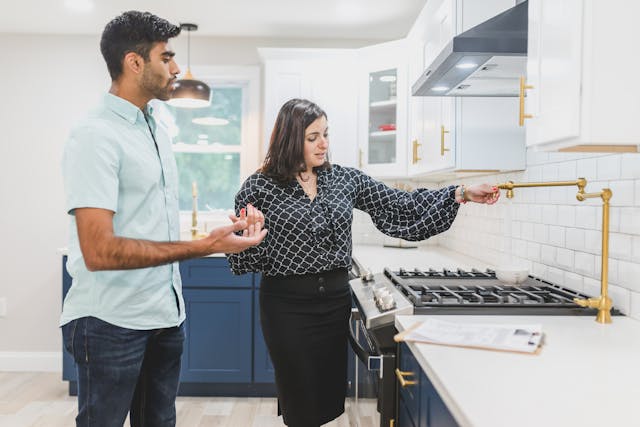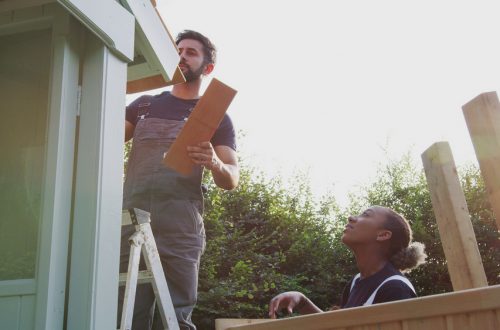
- Smart thermostats may face connectivity issues or inaccurate temperature readings; check installations and update software as needed.
- Touchless faucets can leak or malfunction; ensure connections are tight and sensors are clean.
- Smart lighting problems often involve flickering or connectivity; they involve resetting bulbs and checking network compatibility.
- Electric fireplaces need regular maintenance to avoid malfunctions; keep flammables away and consult professionals for repairs.
- Smart locks provide enhanced security but require regular software updates and careful management of cybersecurity risks.
As technology advances, modern house fixtures have become more convenient and efficient than ever. These fixtures, from smart thermostats to touchless faucets, can make lives easier and homes more comfortable. However, like any other technology, they are not immune to issues. For instance, smart thermostats may malfunction due to connectivity problems, while touchless faucets might fail to respond because of sensor issues.
Incorporating energy smart home improvement practices can help alleviate some of these problems. By optimizing energy usage, you can ensure that smart systems like thermostats and lighting run more efficiently. This blog will discuss some common problems that homeowners may encounter with a few modern house fixtures and provide tips on troubleshooting them.
Smart Thermostats
One of the most common issues with smart thermostats is connection issues. If your thermostat is not linking to your Wi-Fi or is not responding to commands from your smartphone, try restarting both the thermostat and your router.
If the issue persists, check for any software updates that may be available for your thermostat. Another common problem is inaccurate temperature readings. Make sure that the thermostat is installed in a location where it can accurately measure the temperature of the room without being affected by drafts or direct sunlight.
Touchless Faucets
Touchless faucets are great for reducing the spread of germs in the kitchen and bathroom, but they can also be prone to leaks. If you notice water dripping from the faucet even when it is turned off, check for loose connections or worn-out seals. Sometimes, debris can get stuck in the sensor, causing it to malfunction, so make sure to clean the sensor regularly with a damp cloth. Similarly, if you need to fix a dripping bathtub faucet, it might be due to worn-out washers or seals, which can cause water to leak even when the faucet is turned off. Regular maintenance can help prevent these issues.
Smart Lighting
Smart lighting systems allow you to control your lights remotely through an app on your phone or voice commands with a virtual assistant like Alexa or Google Home. However, if your lights are flickering or turning on and off randomly, there may be an issue with the wiring or compatibility with other devices in your home network. Try resetting the bulbs and reconnecting them to see if that resolves the problem.
Electric Fireplaces
Electric fireplaces provide a convenient and cost-effective way to add warmth and ambiance to your home. However, if you notice strange sounds or smells coming from the fireplace, it could indicate a malfunction. Make sure to unplug the fireplace and contact a professional electric fireplace repair service provider for inspection and repairs. They can also help with regular maintenance to keep your fireplace running smoothly. Also, keep flammable items away from the unit to prevent potential hazards.
Smart Locks
Smart locks offer convenience and added security by allowing you to lock or unlock doors remotely. This is done using a smartphone app or keypad entry code. But if you experience issues with the lock not responding to commands or batteries draining quickly, there may be a problem with the battery connections or software glitches.
Cybersecurity risks should also be considered when using smart locks, so make sure to regularly update the lock’s software and change access codes frequently. You can also opt for modern security alternatives such as the following four:
Biometric Locks
Biometric locks use unique physical characteristics such as fingerprints or retinal patterns for access. They provide a high level of security and convenience but can be expensive.
Proximity Locks
Proximity locks use a key fob or card to automatically unlock the door when it senses the device’s presence. They are convenient for hands-free access but can be vulnerable to hacking.
Virtual Keys
Virtual keys, also known as digital keys, allow for remote access control through a smartphone app. They offer convenience and security by allowing you to grant or revoke access to others remotely.
Key Fob Systems
Key fob systems require a key fob to be presented to the lock in order to unlock it. They are commonly used for large commercial properties and offer a high level of security.
Overall, while smart locks can offer convenience and security, it’s essential to consider all aspects before choosing one. Keep in mind the potential risks, and make sure to regularly maintain and update your lock for optimal functionality.
While modern house fixtures such as smart thermostats, touchless faucets, smart lighting, electric fireplaces, and smart locks bring convenience and efficiency to our homes, they can also face common technical issues. Addressing these problems promptly with the proper troubleshooting ensures that our advanced home fixtures continue to function optimally, enhancing both comfort and security in our daily lives.







